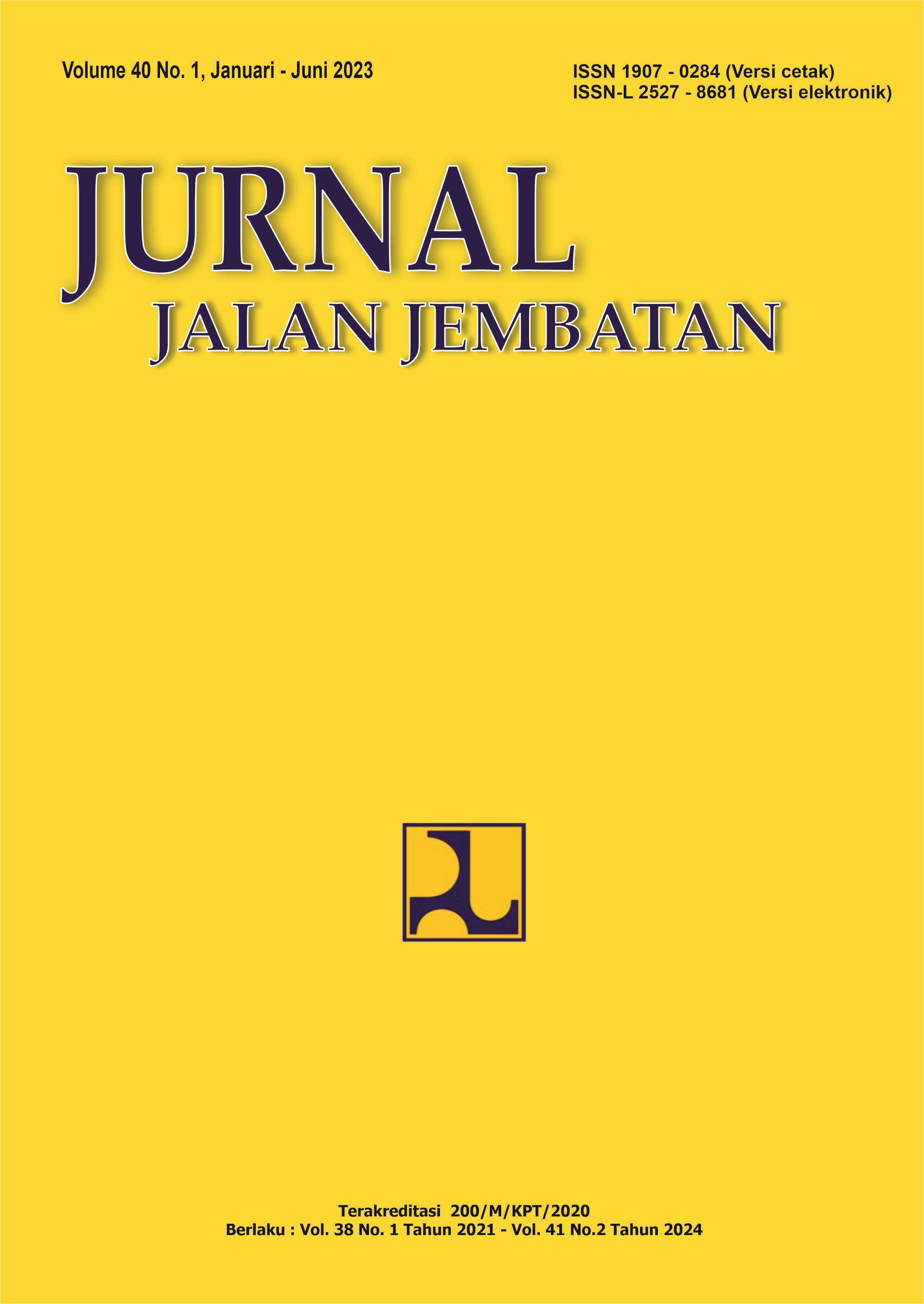PERFORMANCE EVALUATION OF A GLASS FLOOR SUSPENDED TYPE SUSPENSION FOOTBRIDGE BASED ON STATIC LOAD TESTING
Main Article Content
Abstract
The Glass Bridge of Bromo is a suspended type of footbridge with a structural glass floor that was built by the Ministry of Public Works and Public Housing in the Bromo Tengger Semeru National Park, East Java, Indonesia. The bridge was built to provide a unique experience for visitors by allowing them to enjoy the beautiful scenery around Mount Bromo from the transparent floor of the bridge. The use of structural glass as a bridge floor needs to be tested for safety and comfort aspects by testing the load on the structural glass floor segment and the entire bridge structure. Load testing aims to determine whether the bridge is capable of withstanding the load that will pass over it, in this case, pedestrian load. In this study, load testing was carried out on the Glass Bridge of Bromo with an operational planned load of around 100 pedestrians. The load was converted to 240 sandbags with a weight of approximately 35 kg each. The maximum bridge response due to the largest test load was a vertical deformation of 72.70 mm over the entire span, maximum cable force of 19.84 tons, and steel frame stress of the glass floor system of 125.96 MPa. The structural response due to the measured load was well-modeled using the structure model used in this study, allowing for simulation of larger loads for service load evaluation. The analysis results show that the Glass Bridge of Bromo is safe to use with a service load restriction of up to 400 kg/m2. Additionally, the bridge has relatively small deformations compared to the allowable deformation, thus meeting comfort criteria.
Article Details
Authors who publish in this journal agree to the following terms:
-
Authors retain copyright and grant the journal the right of first publication with the work simultaneously licensed under a Creative Commons Attribution License, which allows others to share the work with acknowledgment of the work's authorship and initial publication in this journal.
-
Authors may enter into additional contractual arrangements for the non-exclusive distribution of the journal's published version of the work (e.g., post it to an institutional repository or publish it in a book), with acknowledgment of its initial publication in this journal.
-
Authors are permitted and encouraged to post their work online (e.g., in institutional repositories or on their website) as it can lead to productive exchanges, as well as earlier and greater citation of the published work.
Each submitted manuscript must be accompanied by a "Manuscript Originality Statement" and a "Copyright Transfer Statement".

